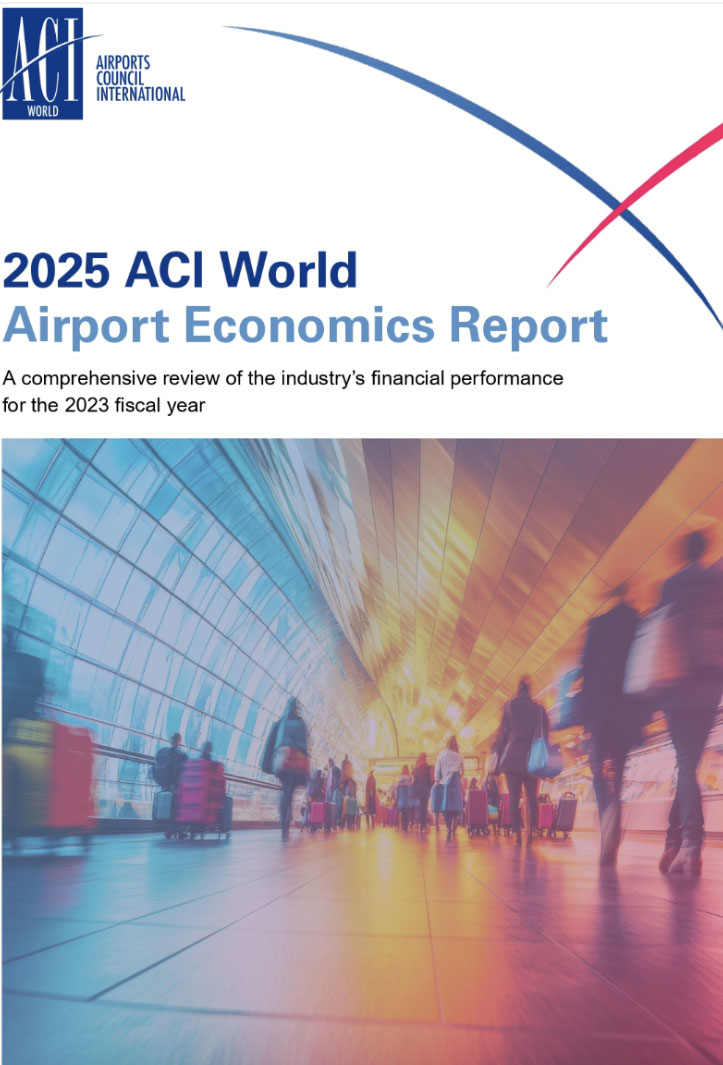SINGAPORE, 30 April 2025: Airports Council International (ACI) World has released its latest airport industry economic and financial performance data, revealing a significant gap between passenger traffic recovery and total airport revenues.
While passenger traffic nearly returned to pre-pandemic levels in 2023 — just 5.4% below 2019 — airport revenues lagged further behind, falling by 11.4%.

The latest ACI World Airport Economics Report examines airports’ economic and financial performance for the 2023 fiscal year, drawing data from over 1,060 airports worldwide. These airports account for 82% of global pre-pandemic passenger traffic, providing a comprehensive overview of the sector’s recovery.
Key global highlights
Total revenues: In 2023, global airport revenues reached USD146 billion, a 21.4% increase from 2022. However, this is still 11.4% lower than the USD158.6 billion reported in 2019, pre-pandemic.
Aeronautical and non-aeronautical revenues: Aeronautical revenues remained the primary source of total airport revenues in 2023, reaching USD79 billion (14% below 2019), with a virtually unchanged share of 53.6% compared to 54.0% in 2019. Meanwhile, non-aeronautical (commercial) revenues — a vital component of airport financial sustainability — stood at USD54 billion (17% below 2019) and slightly declined, from 40.2% in 2019 to 36.7% in 2023.
Capital costs rose by 4% from 2022 and exceeded pre-pandemic figures by 1%, reaching USD40 billion. This increase was driven mainly by an 18% increase in interest expenses, reflecting the ongoing financial strain from airport debt.
Debt-to-EBITDA ratio: The debt-to-EBITDA ratio improved to 5.74:1 in 2023, indicating progress in managing debt. However, this ratio remains elevated compared to pre-pandemic levels, underscoring ongoing financial challenges.
Infrastructure challenges and future air travel growth
The weakened financial health of airports creates significant challenges for infrastructure development needed to meet future travel demand.
According to ACI World, global passenger numbers are expected to rise to 17.7 billion by 2043 and 22.3 billion by 2053 — almost 2.4 times the projected volume for 2024. To address the long-term growth in passenger demand, an estimated USD2.4 trillion in total capital investment will be needed by 2040 for airport infrastructure.
These investments are essential to maintaining a sustainable aviation ecosystem that maximises air travel’s social and economic benefits, including job creation and regional development.
“While passenger traffic has rebounded, airport revenues continue to lag behind, underscoring ongoing financial challenges. With air travel demand expected to soar in the coming decades, it is crucial that regulators implement flexible policies to support airport infrastructure investments—ensuring aviation’s sustainable growth and maximising its social and economic benefits,” said ACI World Director General Justin Erbacci.
About ACI
Airports Council International (ACI), the trade association of the world’s airports, is a federated organisation comprising ACI World, ACI Africa, ACI Asia-Pacific and Middle East, ACI EUROPE, ACI Latin America and the Caribbean and ACI North America.
As of January 2025, ACI serves 830 members, operating 2,181 airports in 170 countries.






